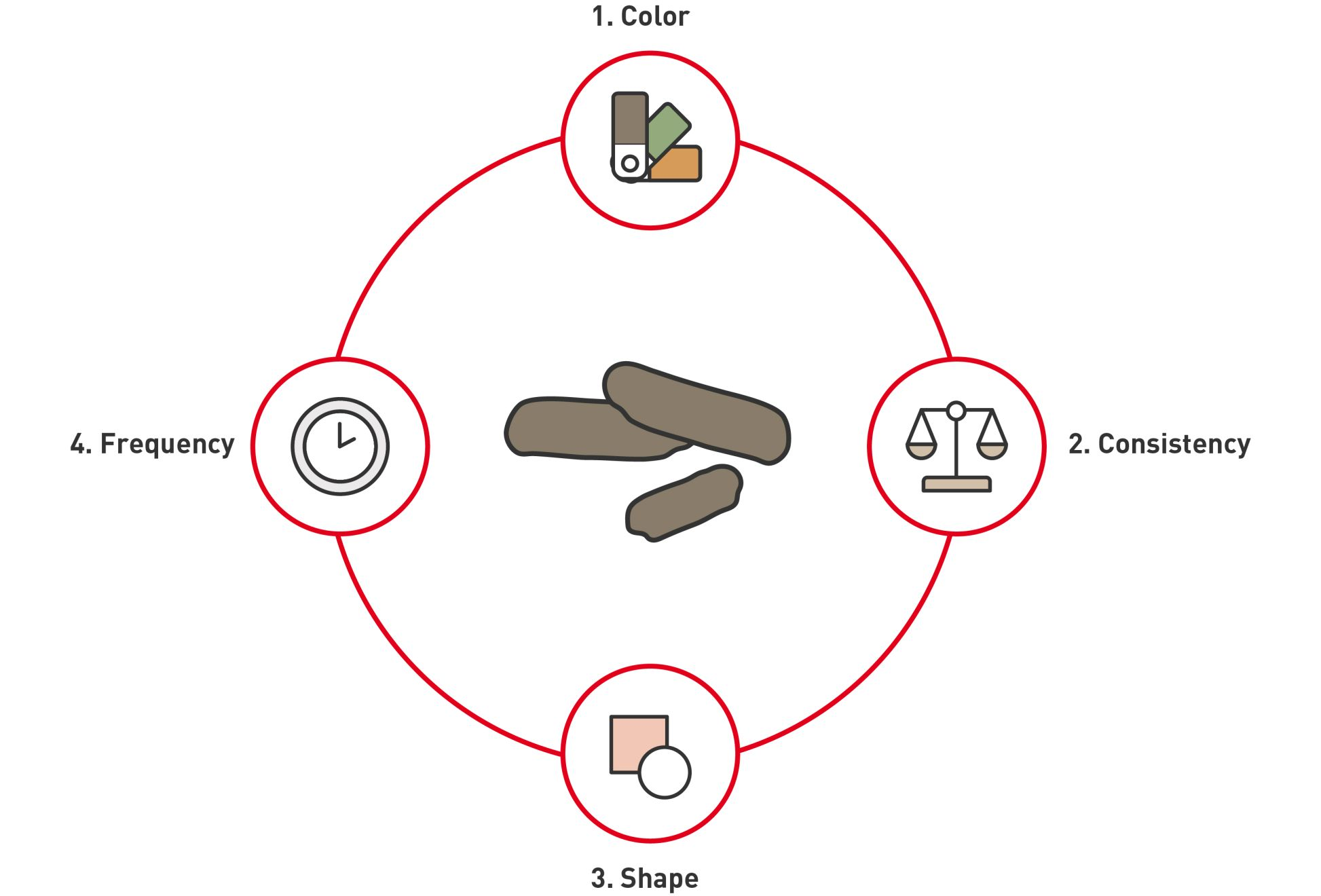What is your dog's poop telling you?
Article

As a pet owner, picking up your dog's poop is a regular occurrence.
But did you know your dog's poop can also provide a good indication of their digestive and overall health? It's good to have an initial understanding of what is usual for your dog's poop so you can spot the changes to look out for, such as variations in colour and consistency.
What consistency should you be looking for?
Your dog’s poop can be categorized as too hard, ideal, and too soft or liquid.
If your dog's poop isn't an ideal consistency, it could be a sign of a gastrointestinal illness that may require further advice and treatment. Treatment for a gastrointestinal illness will vary for every dog, taking into account their individual needs and medical conditions, but can frequently include a change to their diet.
Paying attention to your dog's poop is important and you can assess it at home using our 5-stage dog fecal scoring chart below. Using a dog fecal scoring chart can help you identify if you need to take your dog to a veterinarian for an examination.
A score of 1 - 2, indicates your dog may be suffering from constipation, a score of 2.5 represents the ideal dog poop consistency, while a score of 3 - 5 indicates your dog has diarrhea.
Dog Constipation
1. Pebble-shaped
2. Hard
What is an ideal consistency?
If your dog has moist, compact and easy to pick up poop, this is the ideal consistency.2.5 Log-shaped
Dog Diarrhea
If your dog's poop is very wet or has the consistency of liquid, it could be a sign that something isn't quite right. If this is an ongoing issue for your dog, it's important to speak to your veterinarian as it could be a sign of an underlying health issue.3. Very moist
4. Partially liquid
5. Liquid
Did you know diarrhea is one of the most common reasons dogs are taken to veterinarians?
Click here to learn moreCheck the colour of your dog's poop
Taking a look at the colour of your dog's poop can also provide an insight into whether your dog has an underlying health condition.
Ideal colour - chocolate brown
Red or blood-stained
White & grey
White spots
Yellow or orange
Black
If your dog's poop shows any of these colours you need to speak to your veterinarian as soon as possible so they can diagnose the problem and assess whether further tests or treatment are necessary.
Find a veterinarian2.5 Log-shaped
Log shaped, firm and moist

1. Colour
Chocolate brown.
2. Consistency
Firm and not watery or loose.
3. Shape
Like a log, maintaining its shape when picked up.
4. Frequency
This varies from dog to dog, but make sure their 'normal' frequency is consistent.
Related articles
Like & share this page